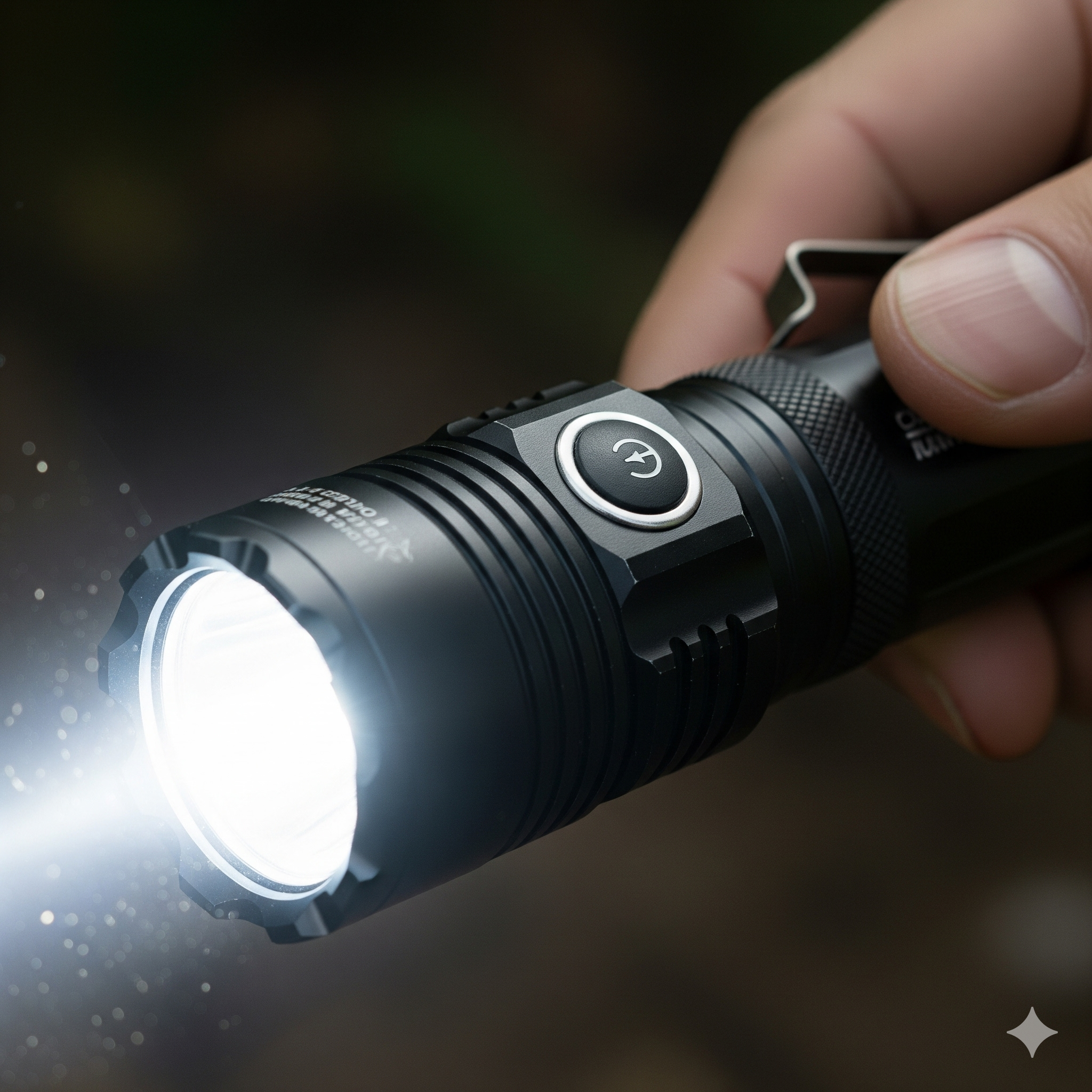How Weather Conditions Affect Portable Flashlight Performance
Posted by Raymond on 15th Oct 2025
Portable flashlights are essential tools for outdoor adventures, emergency kits, and professional use. But have you ever noticed that your flashlight’s brightness or battery life changes depending on the weather?
From freezing nights to humid summer storms, weather conditions play a major role in determining how efficiently your flashlight performs.
In this article, we’ll break down how temperature, humidity, and other environmental factors affect flashlight performance — and how to protect your gear for optimal results.

1. Temperature: The Biggest Influence on Battery Efficiency
Cold Weather: Reduced Battery Output
When the temperature drops, battery chemistry slows down. This leads to:
-
Shorter run times
-
Dimmer light output
-
Potential malfunction of rechargeable batteries
| Battery Type | Cold-Weather Performance | Notes |
|---|---|---|
| Alkaline | Poor | Voltage drops quickly below 0°C |
| NiMH (Rechargeable) | Moderate | May lose 20–30% capacity in cold |
| Li-ion (Rechargeable) | Best | Performs well down to -20°C |
If you use your flashlight for winter camping or mountaineering, choose lithium-ion-powered flashlights — they offer superior low-temperature stability.
? For a scientific look at how temperature affects batteries, check out this resource from Battery University.
Hot Weather: Overheating Risks
Excessive heat can also cause issues:
-
Reduced battery life due to chemical degradation
-
LED overheating, leading to lower brightness or permanent damage
-
Accelerated aging of internal circuits and seals
If you operate your flashlight in hot climates, ensure it has good heat dissipation, such as aluminum alloy housing with built-in thermal protection.
2. Humidity and Moisture: The Hidden Enemy
Humidity doesn’t just fog up lenses — it can lead to:
-
Condensation inside the lens, reducing beam clarity
-
Corrosion of internal components
-
Short circuits if moisture enters the battery compartment
| Humidity Level | Risk | Recommended Flashlight Feature |
|---|---|---|
| Low (0–40%) | Minimal | Basic protection |
| Moderate (40–70%) | Moderate corrosion risk | Water-resistant housing (IPX4) |
| High (70%+) | High moisture risk | Fully waterproof (IPX7–IP68) |
Look for IP-rated flashlights (Ingress Protection) to ensure resistance against rain and immersion.
For instance, an IPX8 flashlight can withstand being submerged in water up to 2 meters deep — perfect for heavy rain or marine use.
3. Rain and Water Exposure
Waterproof flashlights are designed with O-ring seals and corrosion-resistant materials to prevent damage during wet conditions. However, even waterproof models have limits.
| Condition | Required IP Rating | Usage Example |
|---|---|---|
| Light rain | IPX4 | Hiking, camping |
| Heavy rain | IPX6 | Outdoor work, rescue missions |
| Submersion | IPX8 | Diving, fishing |
To keep your flashlight reliable:
-
Regularly check O-ring seals
-
Clean and dry the body after exposure to rain
-
Apply silicone grease to seals for better longevity
4. Dust, Sand, and Wind Exposure
In dry or desert environments, dust and sand can infiltrate small openings, scratch lenses, and block buttons. Wind adds another layer of wear by forcing debris into joints and threads.
Look for flashlights rated IP6X or above, meaning they are completely dustproof.
Also, prefer models with metal construction and recessed switches to prevent mechanical wear from windblown particles.
5. Comparing Flashlight Performance Across Weather Conditions
| Weather Type | Common Problems | Recommended Features | Ideal Material |
|---|---|---|---|
| Cold / Snow | Battery drain | Lithium-ion battery, thermal control | Aluminum alloy |
| Hot / Sunny | Overheating | Heat sink design | Anodized aluminum |
| Humid / Rainy | Condensation | IPX7–IPX8 waterproof rating | Sealed casing |
| Dusty / Windy | Lens damage | IP6X dustproof, recessed switch | Hardened lens |
| Storm / Mixed | Corrosion | O-ring seals, anti-rust coating | Stainless steel parts |
6. How to Protect Your Flashlight in Extreme Weather
Here are a few maintenance and usage tips:
-
Store batteries separately during long-term storage to prevent corrosion.
-
Avoid sudden temperature changes that cause internal condensation.
-
Clean the lens and body regularly to prevent dirt buildup.
-
Lubricate O-rings with silicone grease to maintain waterproofing.
If your flashlight supports rechargeable batteries, keep them between 20°C and 25°C when charging for optimal performance.
7. Choosing the Right Flashlight for All-Weather Use
If you need a flashlight that works rain or shine, consider models with:
-
IPX8 waterproof certification
-
Shock-resistant aluminum housing
-
Rechargeable lithium-ion battery
-
Wide temperature tolerance (-20°C to 50°C)
? For reliable, field-tested options, check out Tank007 portable flashlights — engineered for professionals who demand durability and performance in any weather.
Conclusion
Weather conditions can drastically affect how your portable flashlight performs. By understanding the science behind temperature, humidity, and environmental impact, you can make better choices and keep your flashlight working efficiently for years.
Invest in a rugged, weatherproof model and follow proper maintenance steps — your light will never let you down, no matter the forecast.
